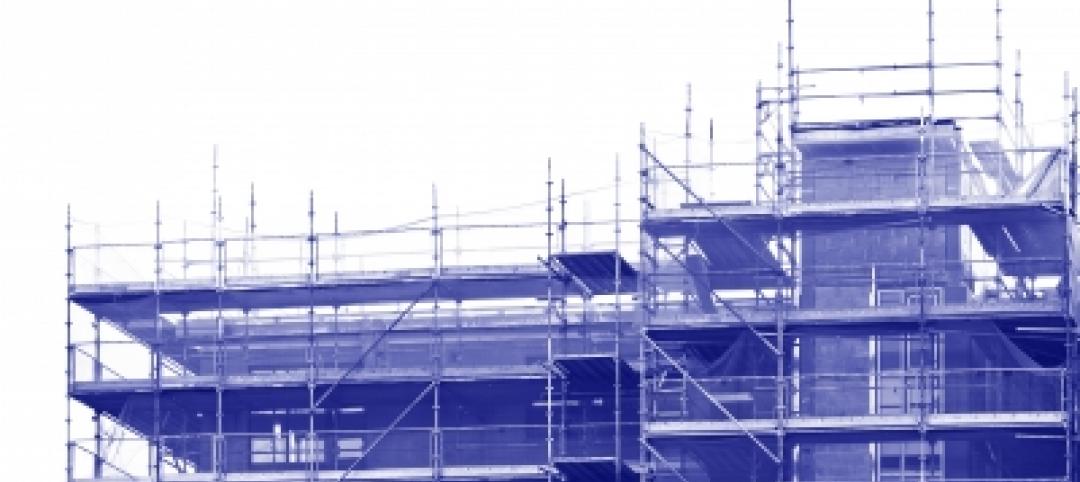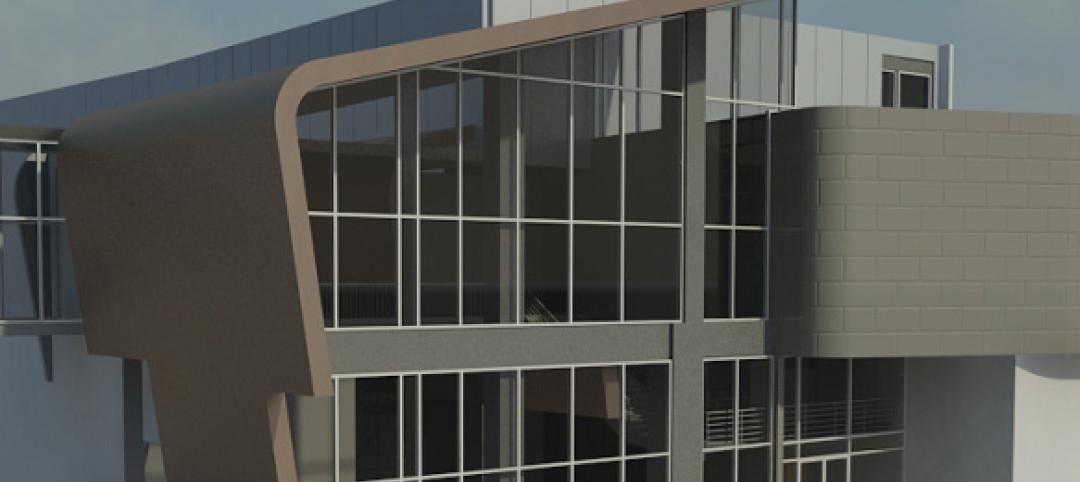
In the days when three-quarters of America was a wild, lawless no-man's land, Pioneer Courthouse in Portland, Ore., stood out as a symbol of justice and national unity. The oldest surviving federal structure in the Pacific Northwest and the second-oldest courthouse west of the Mississippi, Pioneer Courthouse was designed in 1875 by Alfred Mullett, the Supervising Architect of the Treasury. His dramatic three-story, cupola-capped Romanesque monument served as the focal point of Pioneer Courthouse Square, a public plaza in the heart of the City of Roses.
 |
| PHOTOS: MICHAEL MATHERS |
As years went by, however, it became clear that all was not well with this historic landmark. Made of completely unreinforced masonry, the courthouse was at high risk for earthquake damage: one big shake and the whole thing could come toppling down. The threat mobilized a team of government agencies, including the U.S. Court of Appeals, the National Trust for Historic Preservation, and the General Services Administration, into action in 1995. Together, they determined that Pioneer Courthouse needed an upgrade beyond the basic restoration: It would need to be made earthquake-proof, modern and safe, and energy efficient.
Quake, rattle, and roll
The Building Team—led by Donald Eggleston, AIA, of SERA Architects, and Jerry Abdie, of structural engineer KPFF Engineering—had one main concern: earthquake protection. Seismic upgrades comprised $12 million (60%) of the $20 million project cost. The goal was to create a system that would allow the courthouse and the ground to move independently of each other during an earthquake. To achieve this, the team chose to install Oregon's first friction pendulum ground base isolator system.
Comprised of lubricated sliding bearings set into a spherical stainless steel dish, the isolators support the weight of the building and allow it to move in one piece during an earthquake, rather than falling apart as various bits move in different directions. Seventy-five of these isolators were installed beneath the courthouse, each specially tailored for the response requirements of its specific position.
 |
| PHOTOS: MICHAEL MATHERS |
In order to install them, the team had to support the courthouse on pilings and remove the entire original foundation, replacing it with a new pile and pile cap system set below the isolators. Each isolator takes up just one square foot—meaning that the full weight of the courthouse's 24 million pounds now rests on 75 sf of space.
Upgrades to the HVAC, plumbing, and electrical systems (by M/E engineer Paul Schwer or PAE Consulting Engineers, Doug Grassman of contractor J.E. Dunn Northwest, and Bob Brott of CM Art Anderson Associates) also were made with earthquake protection in mind. The new piping in Pioneer Courthouse was designed to be able to withstand three-dimensional motion. Water connections are now able to flex up to 18 inches in any horizontal direction and one inch vertically, which allows them to absorb ground motion instead of breaking under its force. The courthouse is now one of only three buildings in Oregon with a flexible electrical connection system.
Reduce, reuse, remodel
With most of the budget taken up by earthquake proofing, the rest of the work had to be done in an extremely cost-efficient manner. As a result, adaptive reuse became the theme. For example, the original scrolled lighting fixtures were protected in place during construction and later retrofitted with energy-conserving compact fluorescent bulbs. Whole rooms were recycled into new uses, while maintaining their essential historic character. The former post office and mail sorting room became a new main entrance and expanded, state-of-the-art law library. This transformation required the removal of vinyl asbestos tile flooring and an acoustical drop ceiling, which had concealed the original terrazzo floors and decorative wood beam ceiling. Original color schemes and detail work were revived throughout the building, thanks to extensive research of historic photographs, news articles from the Oregon Historical Society archives, and early construction photos preserved by the General Services Administration.
 |
| Among the interior upgrades was the construction of a video conference alternative dispute resolution room where parties can work out their disagreements. PHOTOS: MICHAEL MATHERS |
The interior was also given a major security upgrade. Home to the U.S. Court of Appeals, the building needed to meet the federally mandated safety requirements for this high-risk profession. Surveillance cameras were placed on the building's exterior to act as a visual deterrent. Inside, five underground parking spaces were installed to give the judges a direct, private route from their vehicles to a secure building area.
Motion sustained
Sustainability was also emphasized, notably in the building's HVAC system. The old Pioneer Courthouse had been heated and cooled by an electric boiler, which, besides being extremely inefficient, left occupants with little ability to control their own individual environments. During renovation, this system was replaced by a pair of high-efficiency air handlers and an evaporative chilled-water cooling tower. This system divided the building into small zones, allowing occupants to adjust the temperature in their areas without greatly increasing operational costs.
Also important to the project was the use of materials that were both environmentally friendly and historically accurate. The team used wool carpeting instead of synthetics, formaldehyde-free MDF, linoleum floors instead of vinyl, and high fly-ash concrete—all of which helped minimize the courthouse's ecological footprint. More than 60% of all the construction waste was recycled and diverted from landfill.
As a result, since opening in October 2005, the newly remodeled Pioneer Courthouse's electrical usage is down 30% compared to the same period a year before its renovation.
Related Stories
| Jun 3, 2011
BIM software helps Michigan college students improve building performance
With Autodesk Revit Architecture, Western Michigan University students model campus buildings for energy analysis, renovations and retrofits
| May 10, 2011
Solar installations on multifamily rooftops aid social change
The Los Angeles Business Council's study on the feasibility of installing solar panels on the city’s multifamily buildings shows there's tremendous rooftop capacity, and that a significant portion of that rooftop capacity comes from buildings in economically depressed neighborhoods. Solar installations could therefore be used to create jobs, lower utility costs, and improve conditions for residents in these neighborhood.
| Mar 10, 2011
Taking ‘PIM’ Beyond E-mail
Newforma enhances its Project Center information management platform with a Revit add-in’ and mobile capability.
| Feb 10, 2011
Medical Data Center Sets High Bar for BIM Design Team
The construction of a new data center becomes a test case for BIM’s ability to enhance project delivery across an entire medical campus.
| Feb 10, 2011
Zero Energy Buildings: When Do They Pay Off in a Hot and Humid Climate?
There’s lots of talk about zero energy as the next big milestone in green building. Realistically, how close are we to this ambitious goal? At this point, the strategies required to get to zero energy are relatively expensive. Only a few buildings, most of them 6,000 sf or less, mostly located in California and similar moderate climates, have hit the mark. What about larger buildings, commercial buildings, more problematic climates? Given the constraints of current technology and the comfort demands of building users, is zero energy a worthwhile investment for buildings in, for example, a warm, humid climate?
| Jan 28, 2011
Firestone Building Products Unveils FirestoneRoof Mobile Web App
Firestone Building Products Company unveiled FirestoneRoof, a first-of-its-kind free mobile web app. The FirestoneRoof mobile web app enables customers to instantly connect with Firestone commercial roofing experts and is designed to make it easier for building owners, facility managers, roofing consultants and others charged with maintaining commercial roofing systems to get the support they need, when they need it.
| Jan 25, 2011
Bloomberg launches NYC Urban Tech Innovation Center
To promote the development and commercialization of green building technologies in New York City, Mayor Michael R. Bloomberg has launched the NYC Urban Technology Innovation Center. This initiative will connect academic institutions conducting underlying research, companies creating the associated products, and building owners who will use those technologies.













